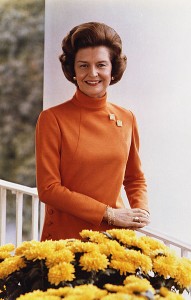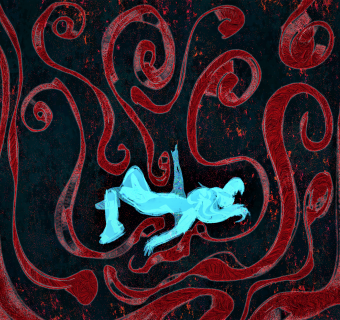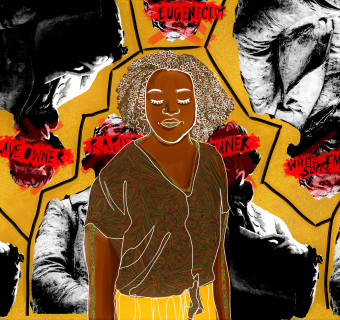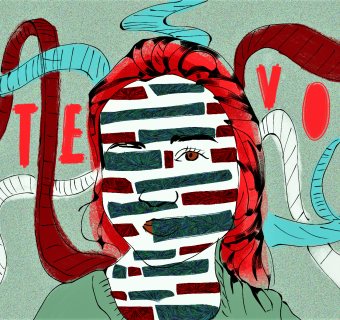Presidents' Day has come and left again for another year. Celebrating the birthday of George Washington, Presidents' Day gives us a chance to show our appreciation to the 44 men who have led this country since its inception. Of all the articles and books written about these influential men how many take the time to remember the women who have graced the hallways of the White House? We all know that 'behind every great man there is a greater woman,' so here is a small tribute to some of the iconic women who have left their mark as First Lady.  Abigail Adams was the first to be called Second Lady when John was vice-president and then First Lady when he later won the presidency, as well as the first to take up residence at the White House. Remembered for being knowledgeable and never afraid to voice her opinions, Abigail was a constant advisor to her husband and president John Adams. Unlike the more backroom approach to political life exemplified by Martha Washington before her, Abigail was a constant source of advice and opinions, which Adams frequently sought throughout his presidency. She was even referred to as 'Mrs. President' by his political rivals. The role of First Lady is not a well-defined position. There is no how-to manual or definition of what a First Lady is expected to do. It does, however, come with the expectation that the lady of the house play hostess to all of the world's top dignitaries, a role at which Jacqueline Kennedy excelled.
Abigail Adams was the first to be called Second Lady when John was vice-president and then First Lady when he later won the presidency, as well as the first to take up residence at the White House. Remembered for being knowledgeable and never afraid to voice her opinions, Abigail was a constant advisor to her husband and president John Adams. Unlike the more backroom approach to political life exemplified by Martha Washington before her, Abigail was a constant source of advice and opinions, which Adams frequently sought throughout his presidency. She was even referred to as 'Mrs. President' by his political rivals. The role of First Lady is not a well-defined position. There is no how-to manual or definition of what a First Lady is expected to do. It does, however, come with the expectation that the lady of the house play hostess to all of the world's top dignitaries, a role at which Jacqueline Kennedy excelled.  When John F. Kennedy was sworn into office in 1961, Jackie was only 31 years old. Being much younger than most other First Ladies before her she struggled in defining her role. Her first order of business was to do what she excelled at: restoring and redesigning the interior of the White House. She believed that the residence of the highest office of the United States was a place to entertain and impress foreign diplomats. Without any real budget for remodeling, Jackie hosted several fund-raising campaigns and appealed to the American people for support in retrieving some of the White House's original and irreplaceable furniture, many of which had been taken away and kept by previous presidents. The remodeling project was also filmed and distributed to foreign countries to be televised, which in turn helped charm the world into pursuing diplomatic relations with the United States.
When John F. Kennedy was sworn into office in 1961, Jackie was only 31 years old. Being much younger than most other First Ladies before her she struggled in defining her role. Her first order of business was to do what she excelled at: restoring and redesigning the interior of the White House. She believed that the residence of the highest office of the United States was a place to entertain and impress foreign diplomats. Without any real budget for remodeling, Jackie hosted several fund-raising campaigns and appealed to the American people for support in retrieving some of the White House's original and irreplaceable furniture, many of which had been taken away and kept by previous presidents. The remodeling project was also filmed and distributed to foreign countries to be televised, which in turn helped charm the world into pursuing diplomatic relations with the United States.  Another iconic female figure who called the White House home is the controversial and popular Betty Ford. Wife to Gerald Ford, Betty quickly rose in popularity by always stating her opinion, being honest and blunt in interviews, and having a candid and honest personality. A professional dancer and working-class factory worker, Betty knew what it meant to struggle financially. As First Lady she was an outspoken advocate of feminist views, equal pay for women, gun control, breast cancer awareness, and the challenges of addiction. Above all else she wanted the American people to finally start talking about the topics most found uncomfortable to discuss. Her stay at the White House was unfortunately cut short when Gerald lost his re-election bid, but that didn't stop Betty from continuing to create social reforms. After an intervention staged by her family for her abuse of alcohol and painkillers, she finally kicked the habit. And in 1982, after fully recovering from her addictions, she opened the doors to the new, non-profit, Betty Ford Center in Rancho Mirage, California. The center continues today as a shining example of how to treat and rehabilitate the complex nature of addictions. Throughout the years many families have moved in and out of the White House. Those within its walls have made decisions to start wars, end slavery, secure trade relations, and continue today to strategize the future of the United States and the world. Whoever it is who seems to hold the office of President, we can clearly see that the role of the First Lady is a title that has proved to be just as important and influential. Who knows, maybe soon we can have first for men, by having the first, “First Man” at the White House for a change. By Jyle Dupuis Images courtesy of Wikipedia.org
Another iconic female figure who called the White House home is the controversial and popular Betty Ford. Wife to Gerald Ford, Betty quickly rose in popularity by always stating her opinion, being honest and blunt in interviews, and having a candid and honest personality. A professional dancer and working-class factory worker, Betty knew what it meant to struggle financially. As First Lady she was an outspoken advocate of feminist views, equal pay for women, gun control, breast cancer awareness, and the challenges of addiction. Above all else she wanted the American people to finally start talking about the topics most found uncomfortable to discuss. Her stay at the White House was unfortunately cut short when Gerald lost his re-election bid, but that didn't stop Betty from continuing to create social reforms. After an intervention staged by her family for her abuse of alcohol and painkillers, she finally kicked the habit. And in 1982, after fully recovering from her addictions, she opened the doors to the new, non-profit, Betty Ford Center in Rancho Mirage, California. The center continues today as a shining example of how to treat and rehabilitate the complex nature of addictions. Throughout the years many families have moved in and out of the White House. Those within its walls have made decisions to start wars, end slavery, secure trade relations, and continue today to strategize the future of the United States and the world. Whoever it is who seems to hold the office of President, we can clearly see that the role of the First Lady is a title that has proved to be just as important and influential. Who knows, maybe soon we can have first for men, by having the first, “First Man” at the White House for a change. By Jyle Dupuis Images courtesy of Wikipedia.org
The Women of the White House
The Women of the White House
February 27, 2013






